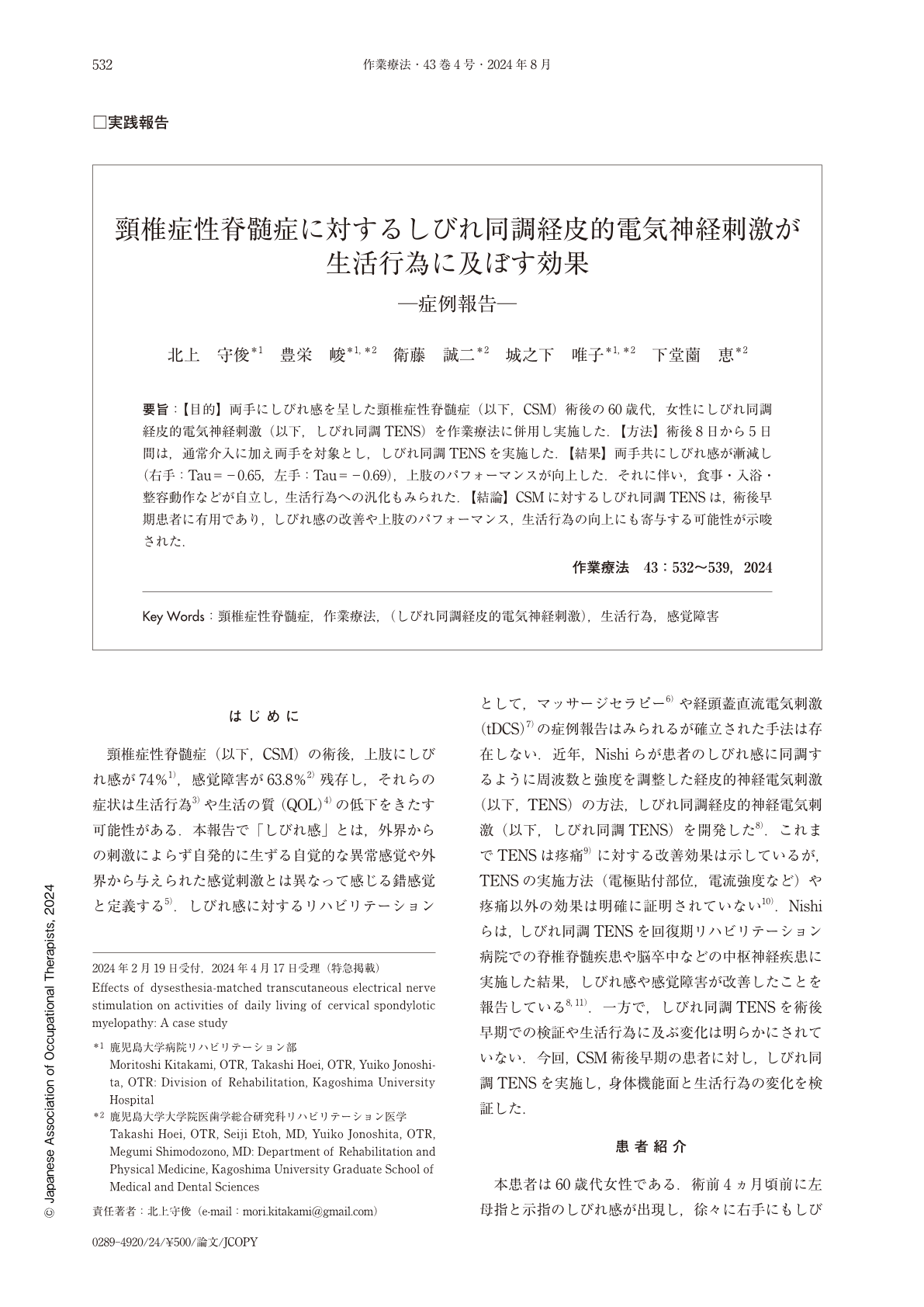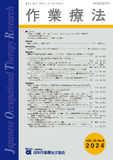Japanese
English
- 販売していません
- Abstract 文献概要
- 1ページ目 Look Inside
- 参考文献 Reference
要旨:【目的】両手にしびれ感を呈した頸椎症性脊髄症(以下,CSM)術後の60歳代,女性にしびれ同調経皮的電気神経刺激(以下,しびれ同調TENS)を作業療法に併用し実施した.【方法】術後8日から5日間は,通常介入に加え両手を対象とし,しびれ同調TENSを実施した.【結果】両手共にしびれ感が漸減し(右手:Tau=-0.65,左手:Tau=-0.69),上肢のパフォーマンスが向上した.それに伴い,食事・入浴・整容動作などが自立し,生活行為への汎化もみられた.【結論】CSMに対するしびれ同調TENSは,術後早期患者に有用であり,しびれ感の改善や上肢のパフォーマンス,生活行為の向上にも寄与する可能性が示唆された.
[Purpose] We implemented dysesthesia-matched transcutaneous electrical nerve stimulation (dysesthesia-matched TENS) in conjunction with occupational therapy in a female patient in her 60s with cervical spondylotic myelopathy (CSM) exhibiting dysesthesia in both hands after surgery. [Methods] Starting from postoperative day 8 and continuing for 5 days, dysesthesia-matched TENS was applied in addition to conventional intervention targeting both hands. [Results] Dysesthesia in both hands gradually decreased (Right hand: Tau=-0.65, Left hand: Tau=-0.69), and upper limb performance improved. Consequently, independence in activities such as eating, bathing, and grooming was achieved, and generalization to activities of daily living was observed. [Conclusion] Dysesthesia-matched TENS for CSM has shown potential utility in early postoperative patients, and it suggests the potential contribution to the improvement of dysesthesia, upper limb performance, and activities of daily living.

Copyright © 2024, Japanese Association of Occupational Therapists. All rights reserved.


